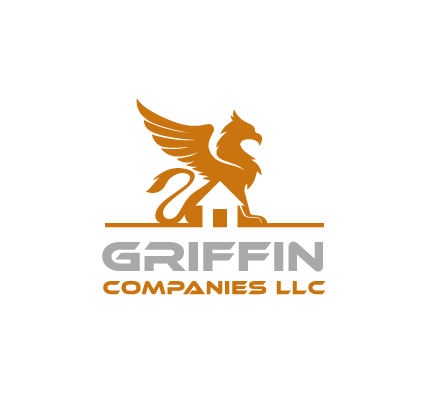Strategic Comprehensive Planning stands at the forefront of this endeavor, serving as the blueprint that guides auditors through the audit lifecycle. It involves carefully aligning the audit’s objectives with the assessed risks, ensuring that efforts are concentrated where they are most needed. This planning phase is critical for the efficient allocation of resources, ensuring that audit teams are equipped and prepared to tackle the areas of greatest concern. Inherent risk comes from the size, nature and complexity of the client’s business transactions. The more complex business transactions are, the higher the inherent risk the client will have. We can see what the formula above looks like in practice with this audit risk model example.
.css-g8fzscpadding:0;margin:0;font-weight:700;What is an audit risk model?

Control risk is the risk that the client’s internal control cannot prevent or detect a material misstatement that occurs on financial statements. It is the second one of audit risk components where audit risk model auditors usually make an assessment by evaluating the internal control system that the client has in place. When performing the audit work, auditors usually follow a risk-based approach.
Statement of Cash Flows

If the client shows a high detection risk, the auditor will likely be able to detect any material errors. An audit risk model is a conceptual tool applied by auditors to evaluate and manage the various risks arising from performing an audit engagement. The tool helps the auditor decide on the types of evidence and how much is needed for each relevant assertion. Imagine that a financial consulting firm has an acceptable audit risk of 5%. An auditing team has determined that the level of inherent risk is 90%, while the control risk is assessed to be 40%. Audits are an essential component of accounting, but they carry some element of risk.
Audit Risk Model

Control Risk is the risk of a material misstatement in the financial statements arising due to absence or failure in the operation of relevant controls of the entity. The model then uses inherent, detection, and control risks to solve audit risks. The standards do not specify on what level is considered an acceptable level.
Auditor’s Report: Necessary Components and Examples
- This strategic application of the Audit Risk Model is instrumental in guiding auditors through the complex landscape of financial auditing, enabling them to navigate risks with precision and confidence.
- GoCardless integrates with over 350 partners, recording transactions at the point of payment to improve accuracy and streamline the accounting workflow.
- It is important to note that no matter how much testing is done, there is always some risk involved in an audit.
- Acceptable audit risk is the concept that auditors need to obtain sufficient appropriate audit evidence to draw reasonable conclusions on which to base the audit opinion.
- Detection risk arises because the auditor’s methods and procedures, to test balances and transactions for misstatements, fail to detect all the misstatements.
Get instant access to lessons taught by experienced private equity pros and bulge bracket investment bankers including financial statement modeling, DCF, M&A, LBO, Comps and Excel Modeling. This document is unique and important because it provides up-to-date information to stakeholders. Similarly, business owners can address areas for improvement since the income statement highlights them. Inherent risk is generally considered to be higher where a high degree of judgment and estimation is involved or where transactions of the entity are highly complex. Rigorous Documentation provides a detailed account of the audit process, findings, and the rationale behind the auditors’ judgments.
How to use the audit risk model formula

This transparency is crucial for accountability, enabling a clear understanding of the decisions made throughout the audit. Quality Control Measures play a pivotal role in overseeing the audit’s progression, ensuring adherence to https://www.bookstime.com/ the highest standards of audit practice and compliance with regulatory requirements. These measures act as a safeguard, ensuring that the audit process is thorough, unbiased, and reflective of the entity’s financial standing.
- Likewise, more substantive works will be required in order to reduce audit risk to an acceptable level.
- Also, auditors cannot change or influence inherent risk; hence, the only way to deal with inherent risk is to tick it as high, moderate or low and perform more audit procedures to reduce the level of audit risk.
- The more complex business transactions are, the higher the inherent risk the client will have.
- The conclusion of the audit risk model is that there’s a planned detection risk of 14%, meaning that the auditor needs to manage risks to ensure the risk of detecting material misstatements falls to below this level.
The audit risk model helps assess this level of risk, making it a useful tool to employ during the planning stages of any financial audit. In this guide, we’ll break down the audit risk model formula, describe its elements, and give an example of how it works. The Audit Risk Model is a strategic framework auditors use to assess and manage any risks or material misstatements in a company’s financial statements. A strategic framework auditors use to assess and manage any risks or material misstatements in a company’s financial statements. Organizations must have adequate internal controls in place to prevent and detect instances of fraud and error. Control risk is considered to be high where the audit entity does not have adequate internal controls to prevent and detect instances of fraud and error in the financial statements.
- Lower detection risk may be achieved by increasing the sample size for audit testing.
- The company also lacks an internal audit department which is a key control especially in a highly regulated environment.
- This dedication to risk assessment and management underscores the pivotal role of internal controls and strategic planning in achieving financial statement precision and reliability.
- Control Risk is the risk of a material misstatement in the financial statements arising due to absence or failure in the operation of relevant controls of the entity.
- A higher inherent risk indicates that the transaction class, balance, or an attached disclosure is at risk of being materially misstated.
- If any errors are caught during the testing, the auditor requests that management propose correcting journal entries.
A multiplicative equation means two or more variables are multiplied to obtain a result. Make sure you convert the percentages to decimals to use in the equation. Prior to joining AuditBoard, Rakeyia spent two years in external audit with a regional firm in Atlanta specializing in medical audits. Upgrading to a paid membership gives you access to our extensive collection of plug-and-play Templates designed to power your performance—as well as CFI’s full course catalog and accredited Certification Programs. Access and download collection of free Templates to help power your productivity and performance.
What Is an Audit Risk Model?
Financial auditing is both critical and complex, tasked with ensuring the accuracy and reliability of a company’s financial statements. At the heart of this endeavor lies the management of audit risk — the risk that an auditor may unknowingly fail to modify their opinion on financial statements that are materially misstated. As the stakes are high, mastering audit risk is not only about safeguarding reputation but also about ensuring financial integrity. This blog post delves into the top strategies and tools for managing audit risk, ensuring auditors can provide precise financial statements that stakeholders can trust.

